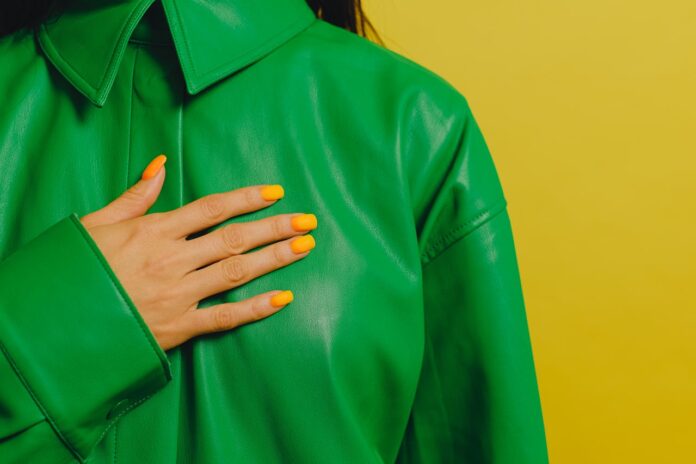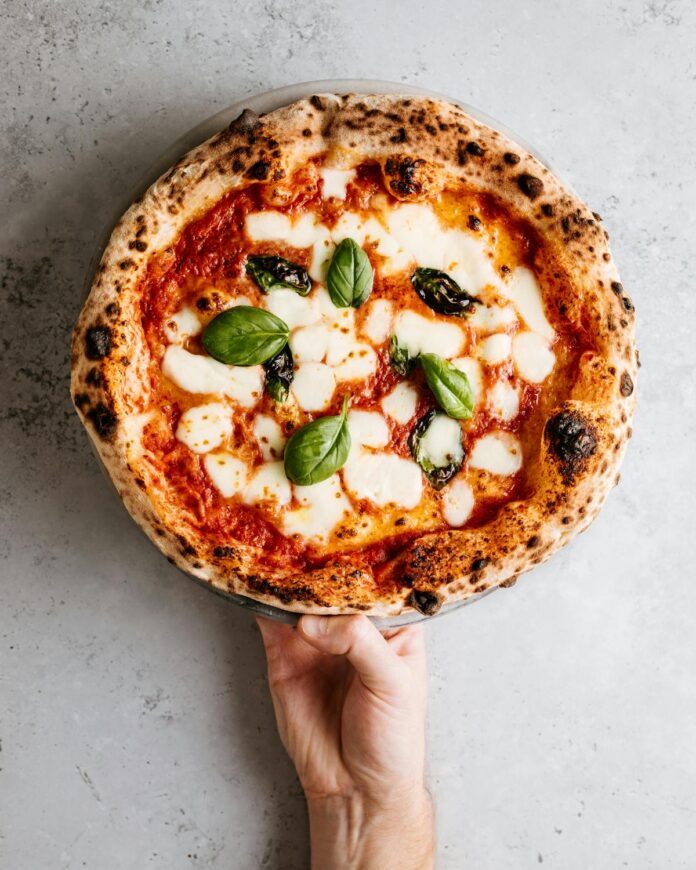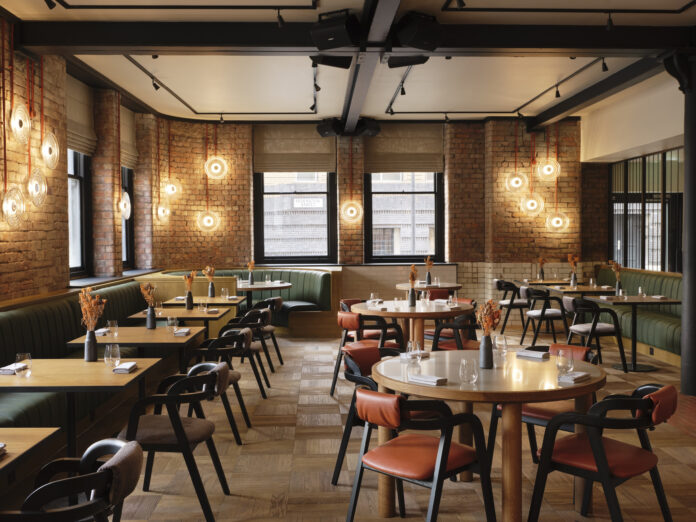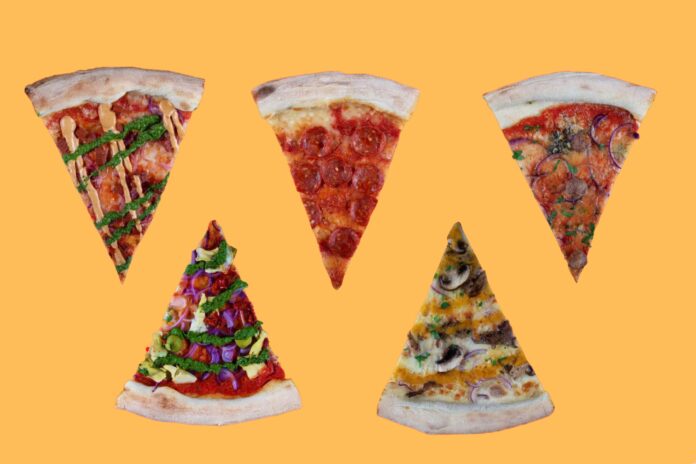We tend to hurry up and down them without a second thought, yet staircases occupy prime real estate in our homes. Far from being just functional transitions between floors, they’re untapped canvases of design potential.
Most homeowners pour their decorating budget into kitchens and bathrooms, completely overlooking the staircase. This represents a missed opportunity—this architectural element is often the first thing visitors see when they step through the front door. The staircase essentially functions as the spine of your home, connecting spaces and creating that crucial first impression that sets the tone for the entire property. By neglecting this central feature, homeowners miss the chance to make a powerful design statement that can elevate their entire interior scheme.
Whether you’re renovating a Victorian terrace or putting your stamp on a new-build, reimagining your staircase can utterly transform your interior. With thoughtful design, these everyday structures become jaw-dropping focal points that set the tone for your entire home. The magic lies in their versatility—they can whisper understated elegance or boldly announce your design confidence, depending on your personal style and the character of your property.
Embrace The Elegance Of Glass
Nothing dates a hallway faster than chunky wooden banisters and dated spindles. Enter glass balustrades—the contemporary solution that instantly refreshes tired staircases while allowing light to flow freely throughout your space.
Glass balustrades can make even the most modest hallway feel twice the size. This transformative effect comes from the way glass eliminates visual barriers, creating an uninterrupted line of sight that enhances spatial perception. The material’s transparency also allows decorative elements beyond the staircase to remain visible, effectively turning your entire hallway into a cohesive design statement rather than compartmentalising the space.
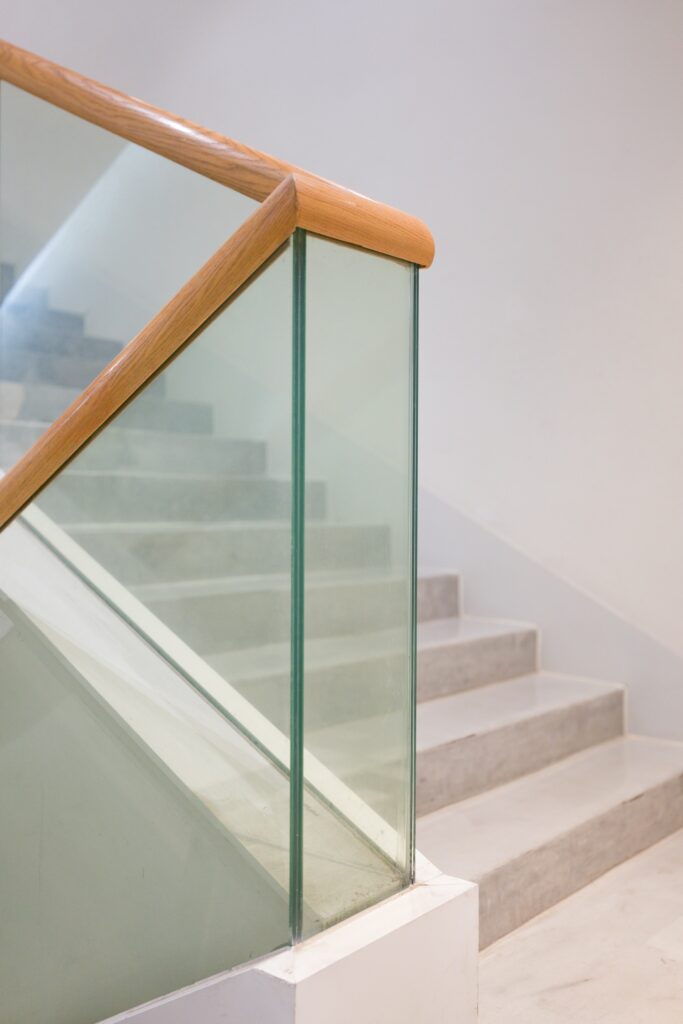
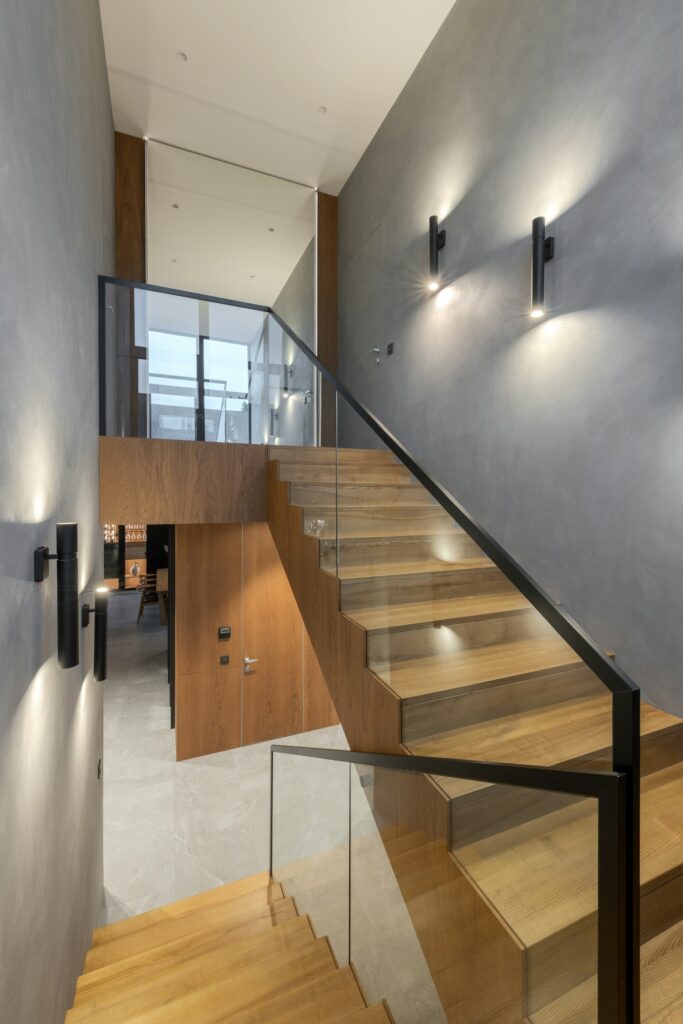
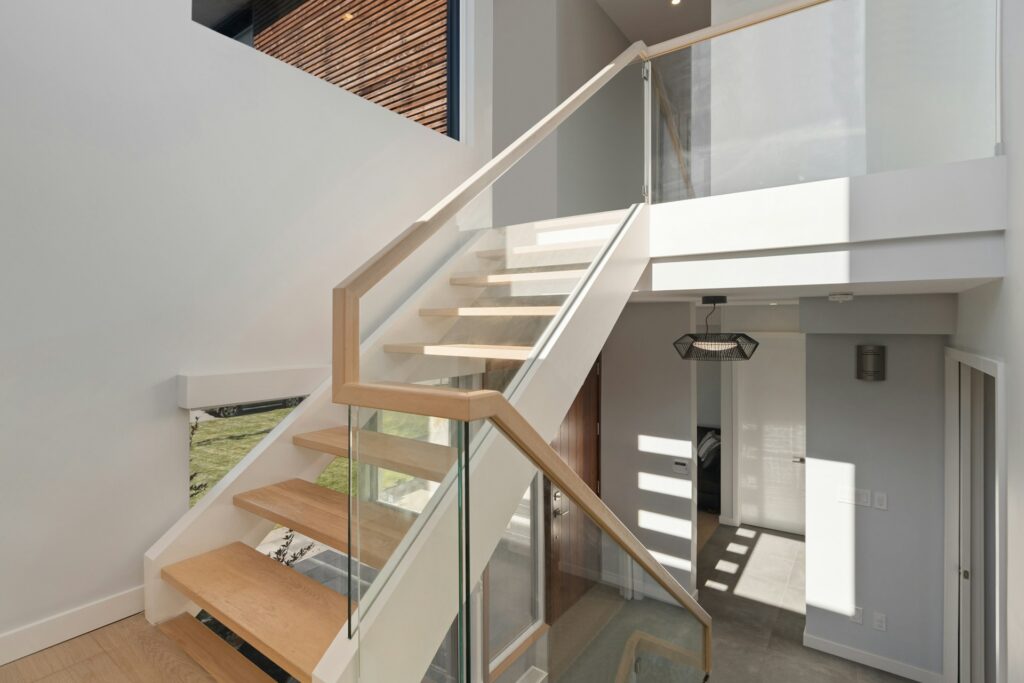
Paired with rich oak or walnut treads, glass creates that perfect balance between clean modernity and timeless warmth. The reflective quality amplifies natural light too, brightening gloomy entranceways and creating a welcoming atmosphere from the moment you cross the threshold. For the truly adventurous, structural glass treads supported by minimalist fixings create a genuinely breathtaking feature—though perhaps not for the faint-hearted!
Make A Statement With Spiral Designs
When square footage comes at a premium (and when doesn’t it these days?), spiral staircases offer both clever space-saving and undeniable drama. Their sweeping curves create a sculptural element that draws the eye upward, whilst occupying minimal floor space.
The think we love most about spiral staircase? They function essentially as a piece of functional art that completely transforms the energy of a room. The sculptural quality introduces an element of movement and visual intrigue that static architecture often lacks.
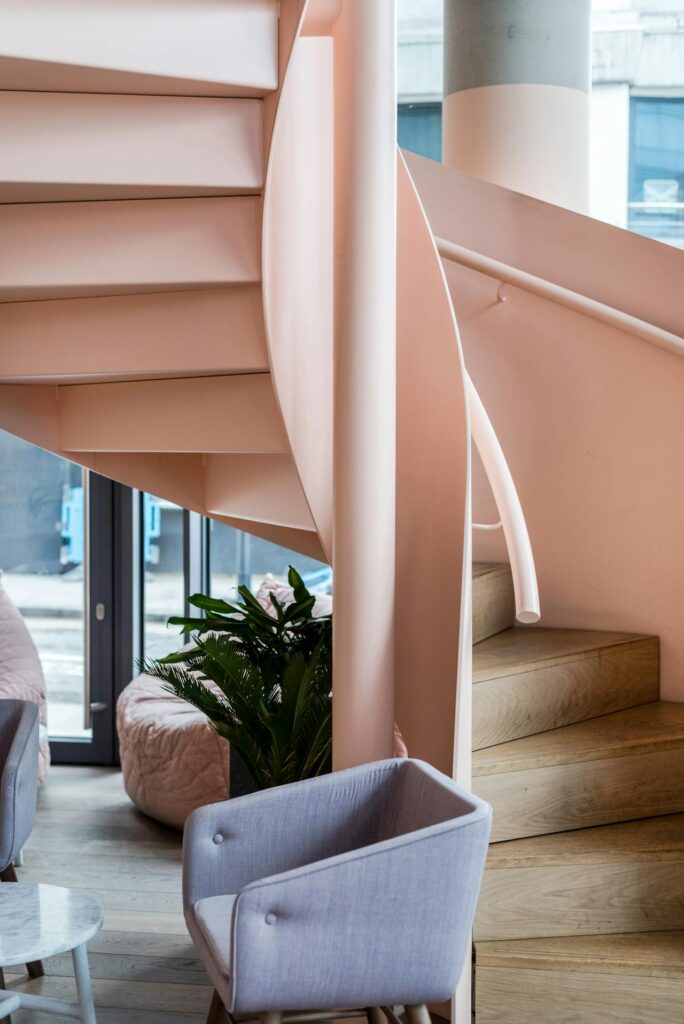
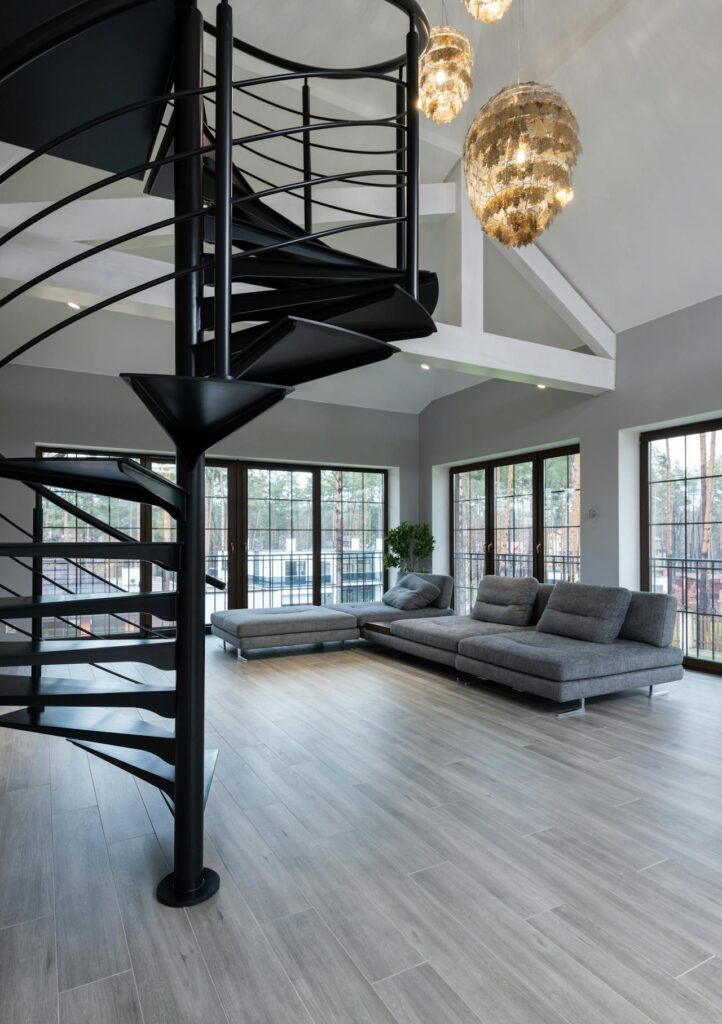
From classic wrought iron to sleek contemporary steel-and-wood combinations, spiral staircases work brilliantly in both period properties and modern homes. The helix shape introduces movement and dynamism to static spaces—essentially a kinetic sculpture at the heart of your home. They’ve long been the darling of Instagram for good reason; spiral staircases inevitably become conversation starters, architectural talking points that leave lasting impressions whilst serving your daily needs with panache.
Floating Treads For Minimalist Charm
Nothing says architectural confidence quite like stairs that appear to float in mid-air. These cantilevered marvels seem to defy gravity, with treads projecting from the wall without visible support—a show-stopping feature for lovers of clean, minimalist aesthetics.
Visitors invariably ask how floating treads manage to stay up. The magic happens inside the wall with serious reinforcement and precision installation that enables this gravity-defying effect. Each tread typically anchors to a concealed steel structure embedded within the supporting wall, requiring meticulous engineering calculations to ensure stability and safety. This invisible structural support system is what allows the treads to project outward with such dramatic visual lightness, creating the illusion that they’re suspended in mid-air.
The beauty of floating treads lies in their chameleon-like versatility. From blonde engineered oak that brightens contemporary spaces to brooding wenge or concrete for industrial-inspired interiors, the material options are endless. Leave the space beneath completely open to enhance that coveted sense of space and light, or use it cleverly for streamlined storage that maintains the minimalist vibe.
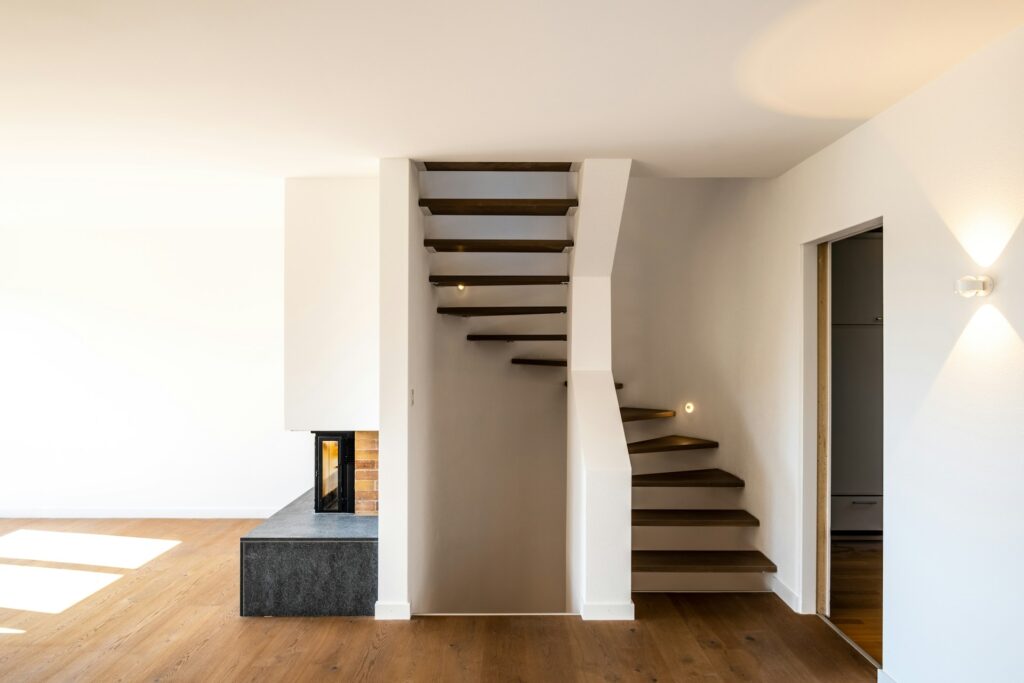
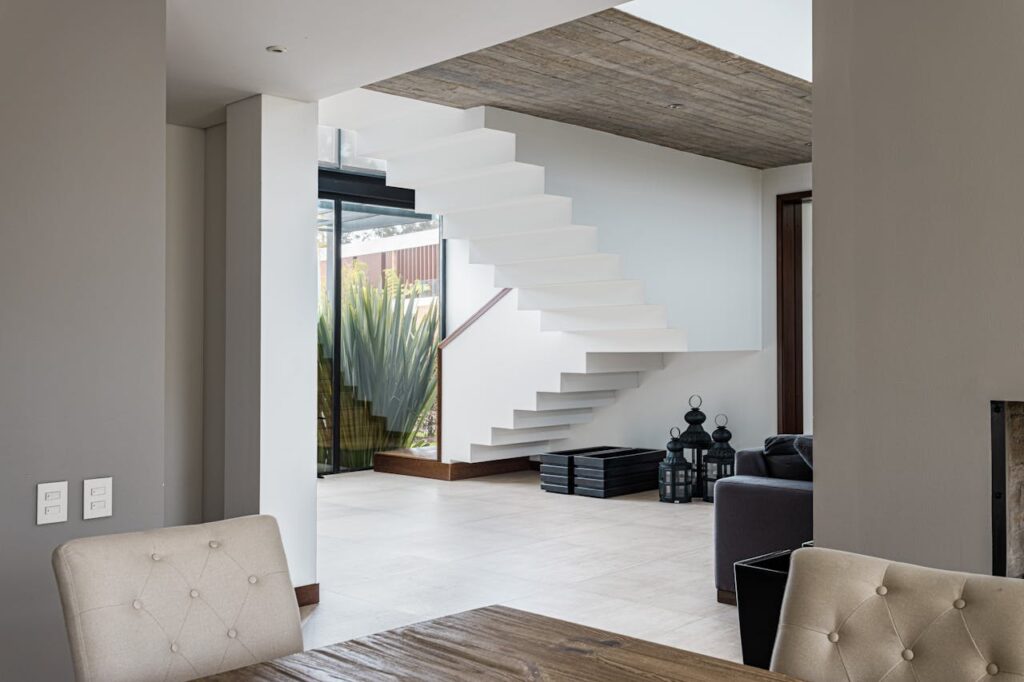
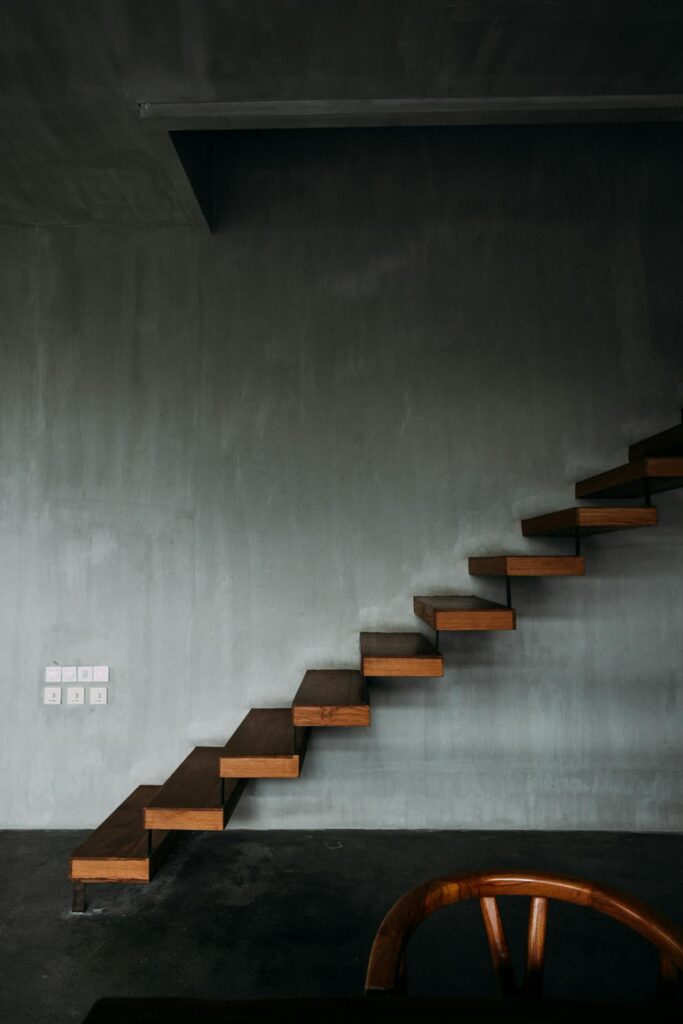
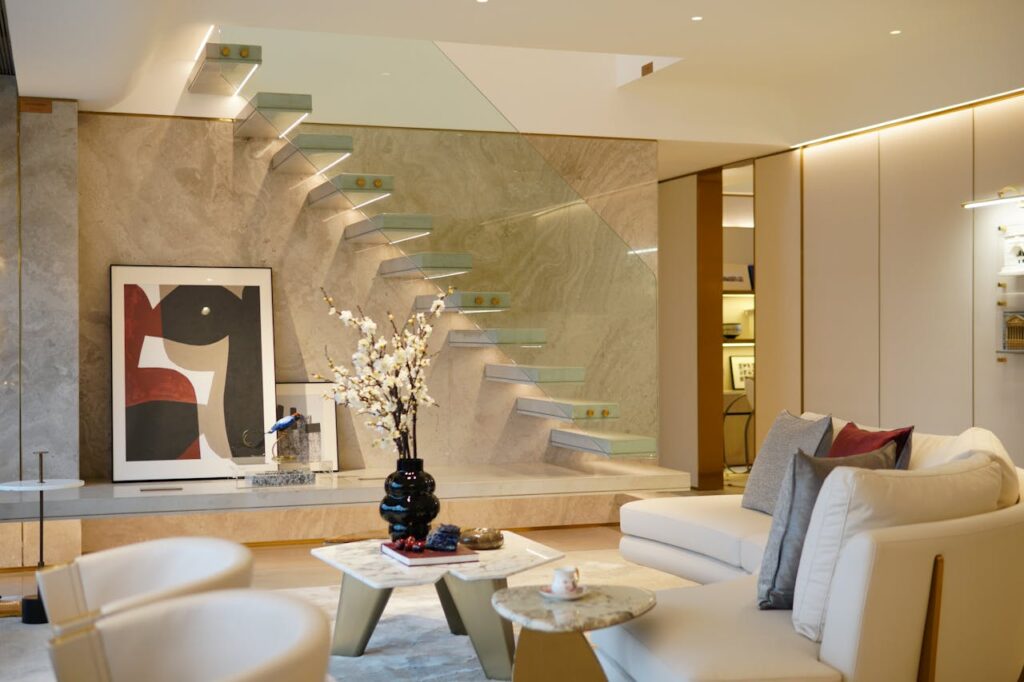
Under-Stair Storage Solutions
That awkward space beneath your staircase represents some of the most underutilised square footage in British homes. Rather than relegating it to the dumping ground for wellies and winter coats, consider its glorious potential.
Under-stair spaces have been successfully transformed into everything from home offices to wine cellars. The key is seeing possibilities rather than problems in these unique spaces. This triangular footprint, often dismissed as awkward, actually offers a perfectly shaped niche for specialised functions that might otherwise compete for valuable floor area elsewhere in the home. With thoughtful planning, what was once dead space becomes one of the most efficient and characterful features of the property.
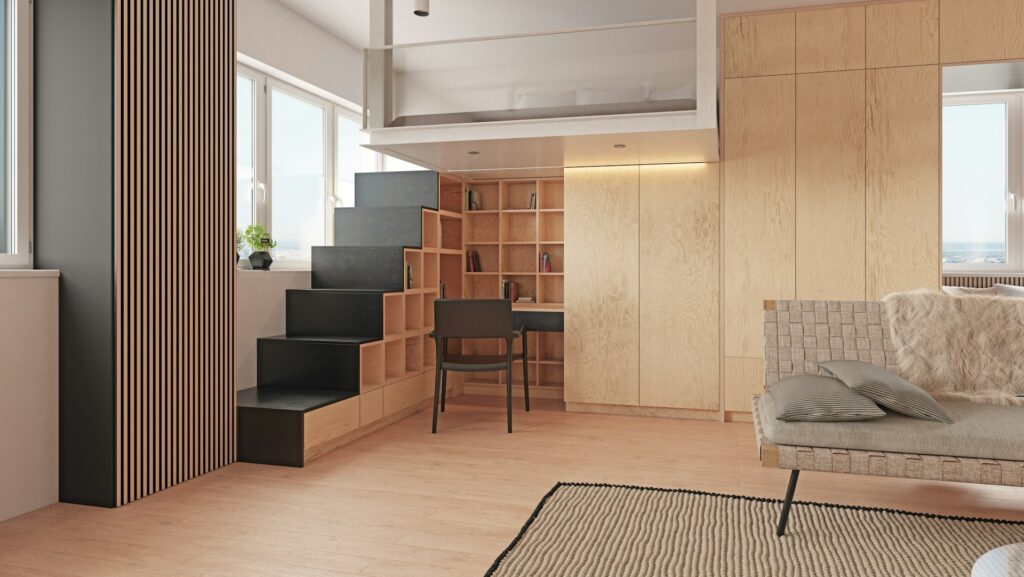
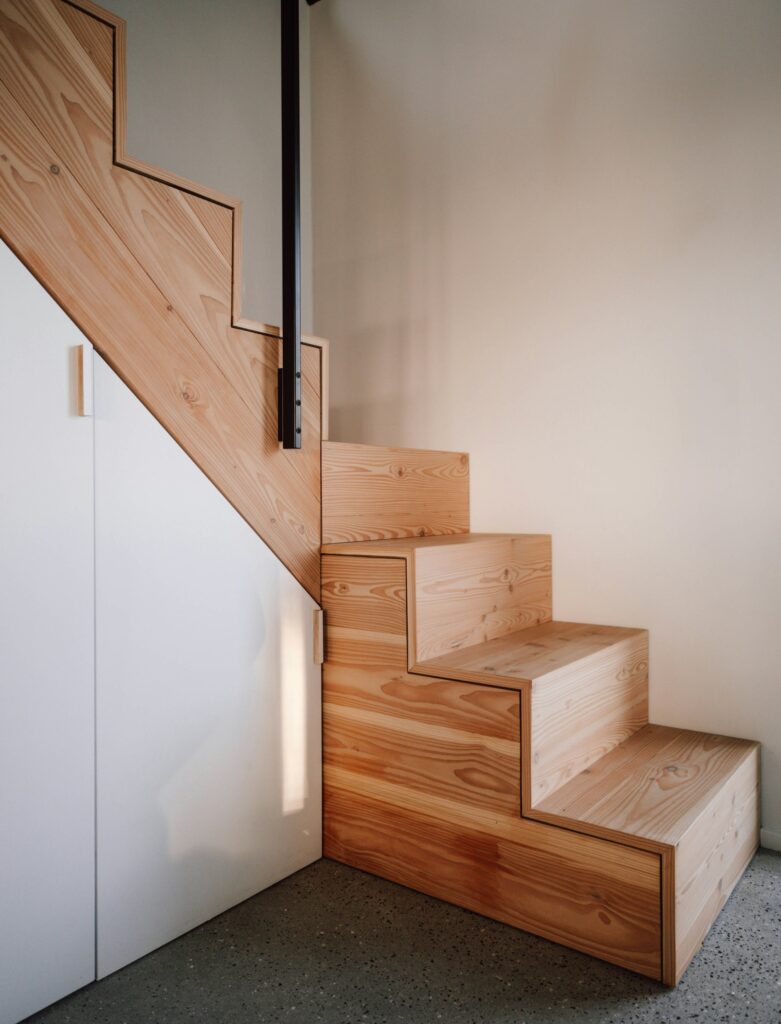

Sleek drawers that blend seamlessly with your staircase design offer discreet storage without the visual clutter. Alternatively, a built-in reading nook with comfortable cushions and clever shelving creates a cosy retreat that makes use of every inch. For busy households, consider dedicated zones—pull-out wine racks for evening entertainers, specialised shoe storage for footwear enthusiasts, or even a secret den for little ones that would make Harry Potter green with envy. The key to success? Bespoke joinery that looks intentional rather than afterthought, creating storage that appears perfectly integrated with your staircase design.
Bold Colour Choices
Today’s most striking staircases throw caution to the wind with glorious colour. A deep navy blue or forest green painted along the staircase wall creates a sophisticated backdrop for white-painted spindles—instantly elevating a tired hallway.
Staircases can handle much bolder colour choices than most people realise. As transitional spaces, they present the perfect opportunity to be braver with your palette choices. Unlike rooms where you spend extended periods, staircases are experienced in motion, allowing for more dramatic visual impact without becoming overwhelming or tiresome. This transient quality makes them ideal testing grounds for vibrant hues or striking colour combinations that might feel too intense in living spaces where you linger longer.
For truly dramatic impact, consider richly coloured carpet in jewel tones like emerald or sapphire. Far from the beige berbers of yesteryear, today’s colourful carpet options introduce personality while providing sound insulation and comfort underfoot. Herringbone patterns or subtle geometrics disguise everyday wear and tear—particularly important in high-traffic areas like staircases.
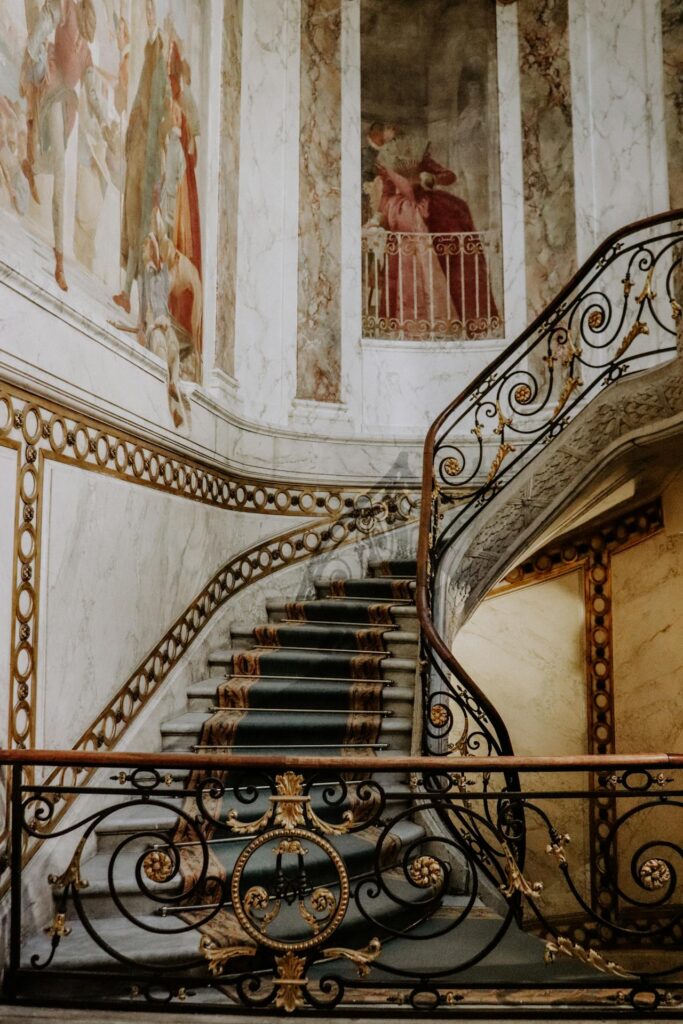
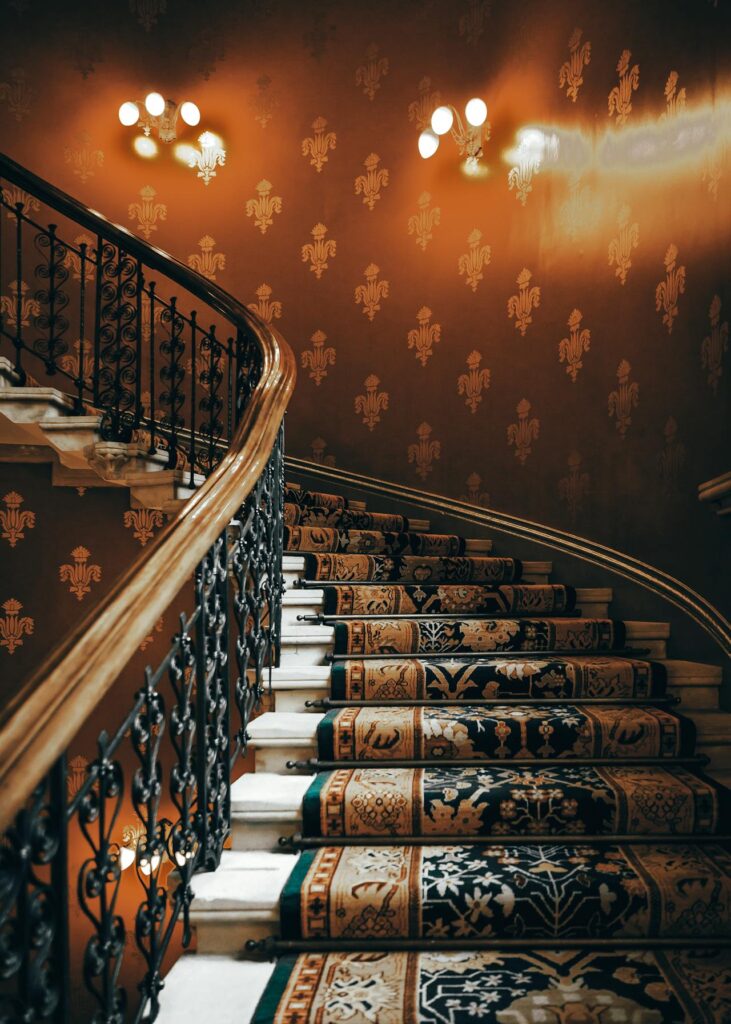
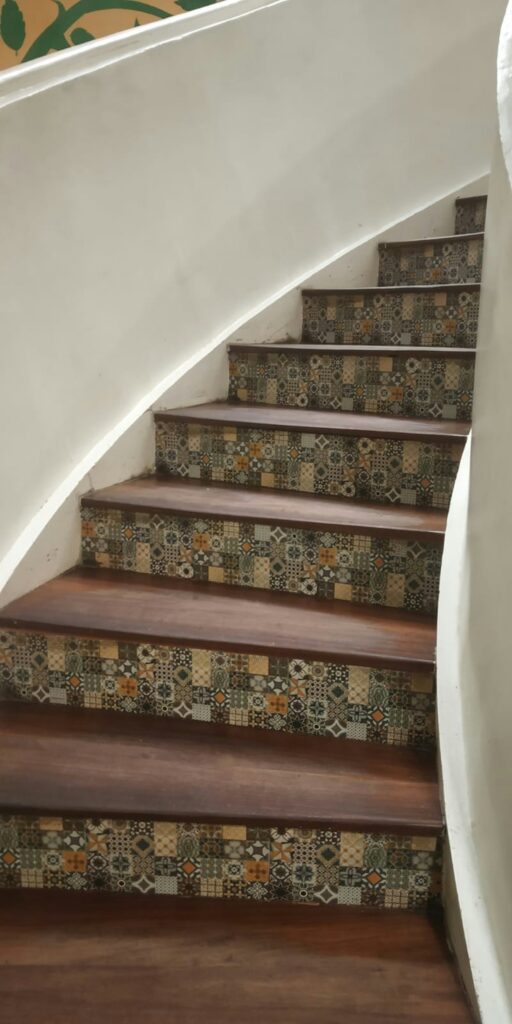
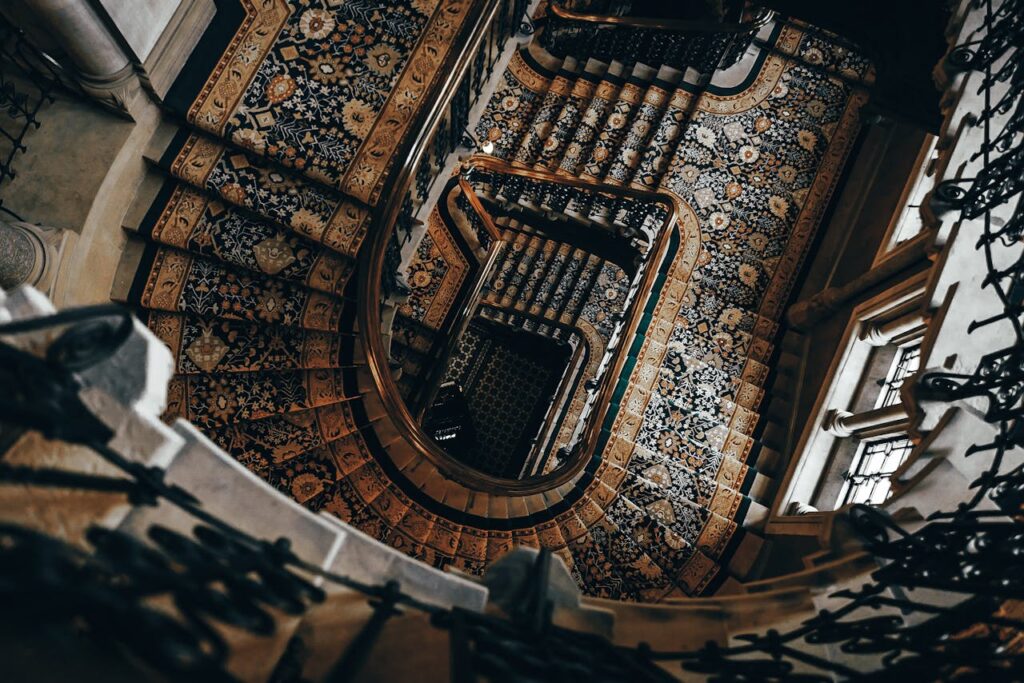
Alternatively, mosaic tiles on risers offer unlimited creative potential that can utterly transform your entrance hall. From subtle Victorian-style patterns that honour period properties to bold Mediterranean-inspired designs in vibrant colour combinations, these intricate mosaics turn your staircase into a genuine work of art. Heritage colours like terracotta and cobalt create timeless appeal, while contemporary shades such as teal and burnt orange make an unmistakably modern statement.
Mix & Match Materials
Gone are the days when staircases needed to be constructed entirely from a single material. Today’s most striking designs boldly combine elements for textural interest that feels distinctly bespoke.
The most compelling contemporary designs focus on unexpected combinations. Industrial steel against warm timber, or concrete steps with brass detailing—these juxtapositions create visual tension that’s incredibly sophisticated and distinctive. The intentional contrast between seemingly opposing materials challenges conventional design expectations, resulting in a custom appearance that mass-produced staircases simply cannot replicate. These material dialogues tell a more complex design story, revealing a thoughtful approach that elevates your staircase beyond the merely functional into something truly bespoke.
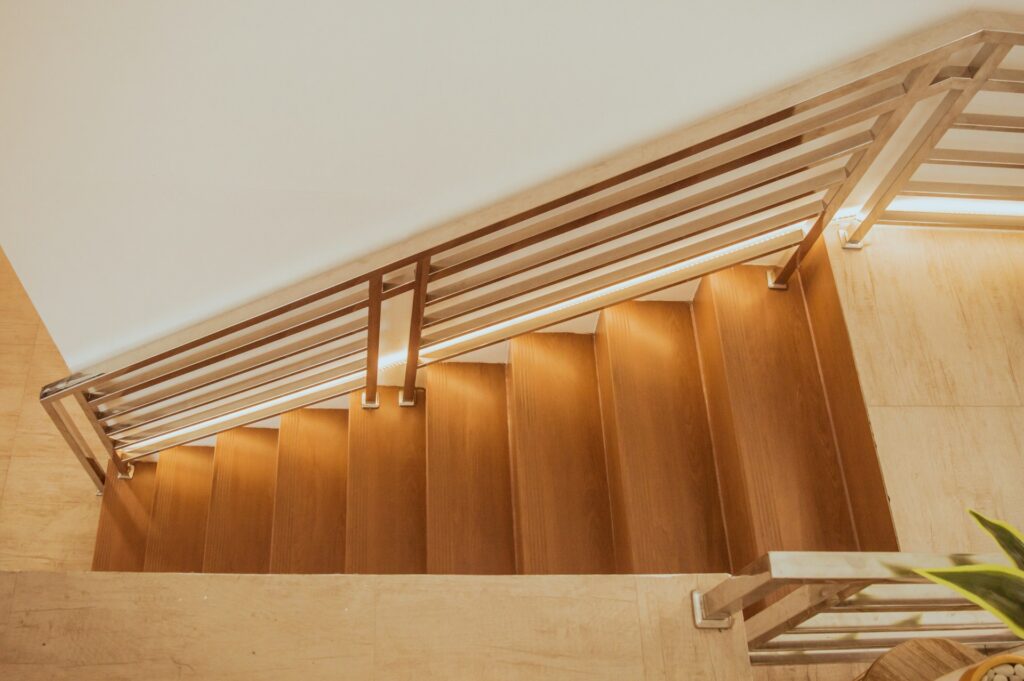
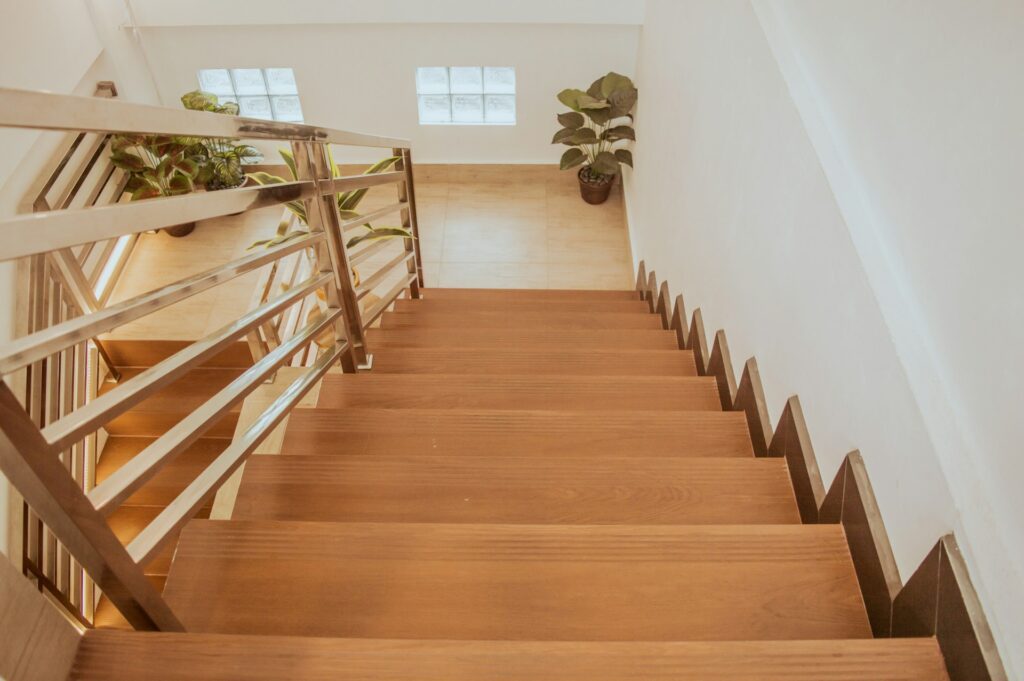

The contrast between differing textures—smooth against rough, matte against glossy—adds depth and character that can’t be achieved with monotonous materials. Think weathered wood treads paired with powder-coated metal balustrades, or sleek marble steps offset by a tactile rope handrail.
When planning these material marriages, consider how they’ll age. Some materials, like brass and copper, develop a beautiful patina that tells the story of daily use, while others maintain their pristine appearance with minimal maintenance. Remember, you’ll interact with your staircase multiple times daily—the cool touch of metal beneath your palm or the warmth of wood underfoot becomes part of your home’s sensory experience.
Lighting That Leads The Way
A poorly lit staircase isn’t just unwelcoming—it’s potentially hazardous. Yet with clever illumination, this practical concern becomes an opportunity for atmospheric design that transforms your staircase from merely functional to genuinely magical.
Staircase lights should never be relegated to an afterthought but instead integrated into the initial design conversations. Thoughtful lighting completely transforms how the space is experienced on a daily basis. Depending on the style of your home, consider an elaborate chandelier or an unusual feature light.

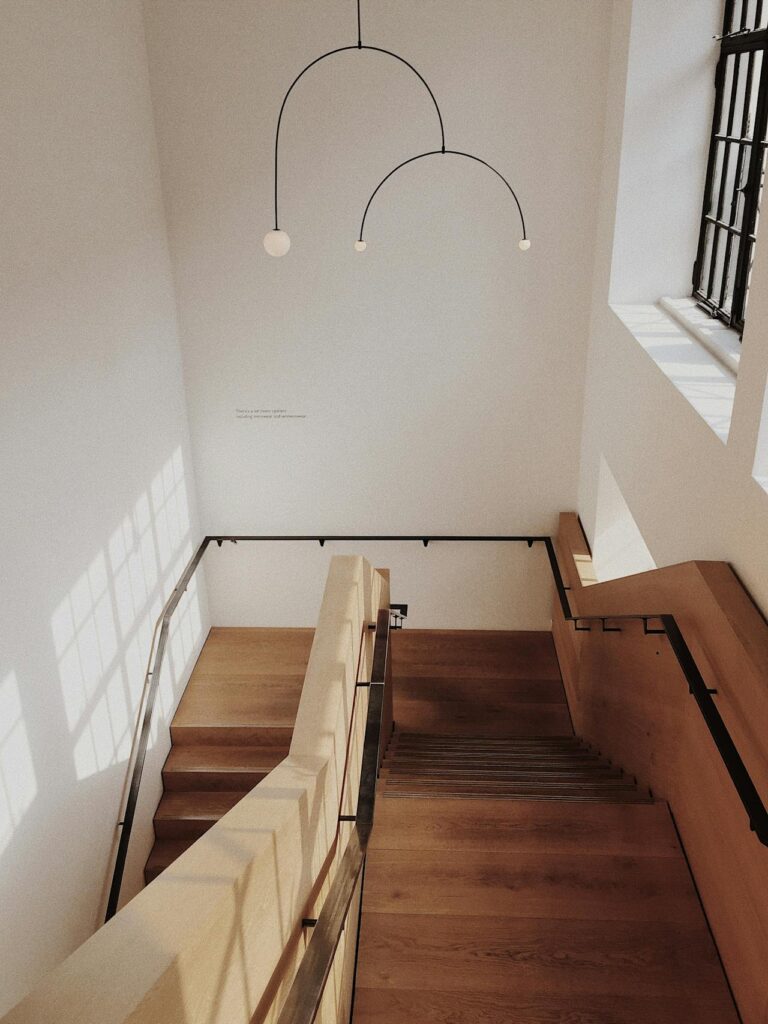
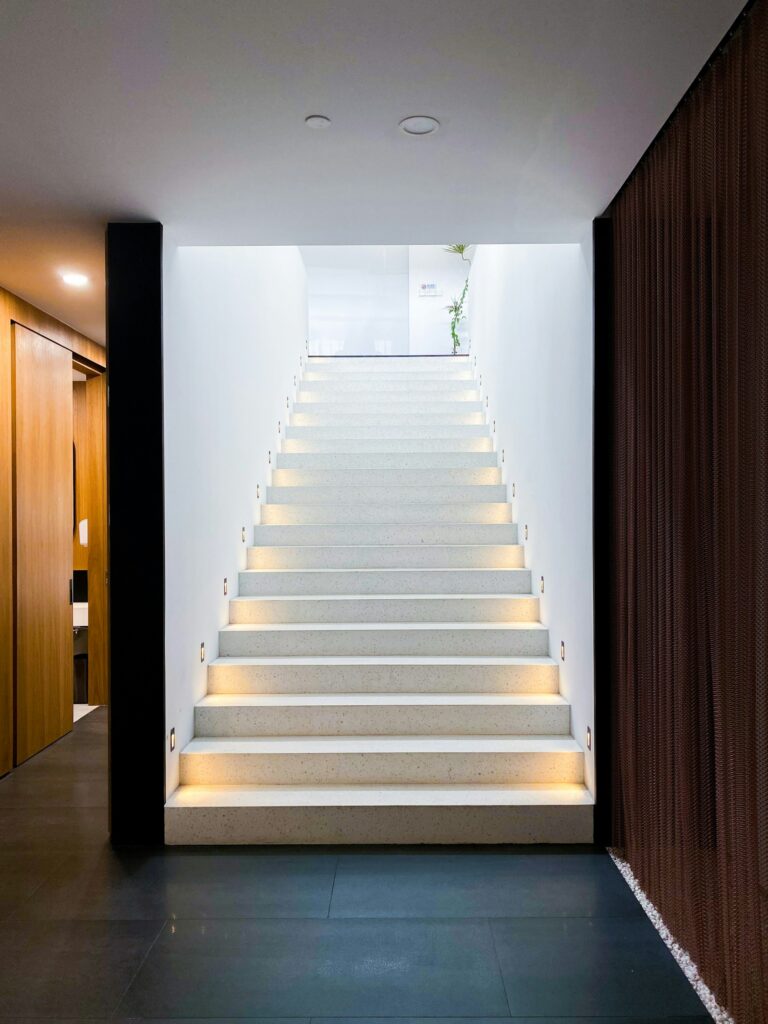
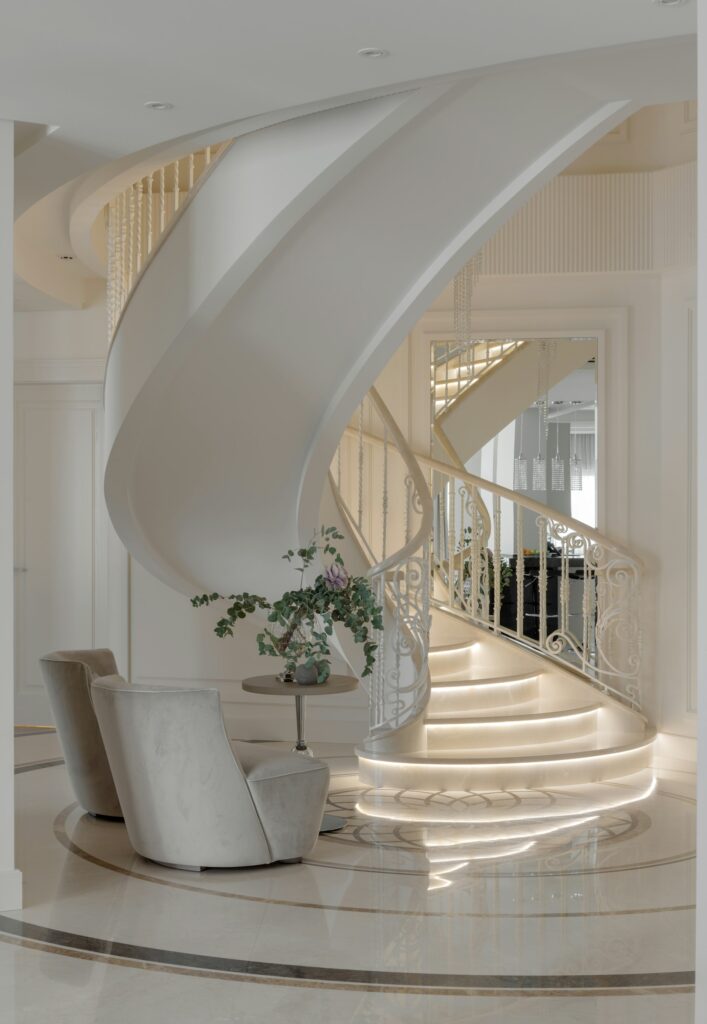

Recessed LED strips tucked beneath treads create that coveted floating effect while providing practical illumination for nighttime navigation. Wall-mounted fixtures can highlight architectural details or artwork displayed along staircase walls, while dramatic pendant lights suspended through the centre of a spiral staircase define the vertical space spectacularly.
Smart lighting takes convenience to another level—motion-activated systems illuminate your path when needed and switch off when the staircase is unoccupied, combining safety with energy efficiency. Pay attention to how your artificial lighting will interact with natural light throughout the day; those momentary patterns of sunshine sweeping across your staircase create an ever-changing visual experience that can be enhanced or diminished by your lighting choices.
The Natural Touch
Our increasing disconnection from nature has sparked a counter-trend in British interiors—bringing the outside in wherever possible, including staircases.
There’s something inherently and instantly calming about incorporating natural materials in the home. This approach represents biophilic design principles at their most practical and accessible. The tactile qualities of natural materials—the subtle grain variations in timber, the organic imperfections in stone—provide a sensory richness that manufactured alternatives simply cannot replicate. These elements forge a subtle but meaningful connection to the natural world, offering a daily reminder of nature’s presence even within the most urban of environments.
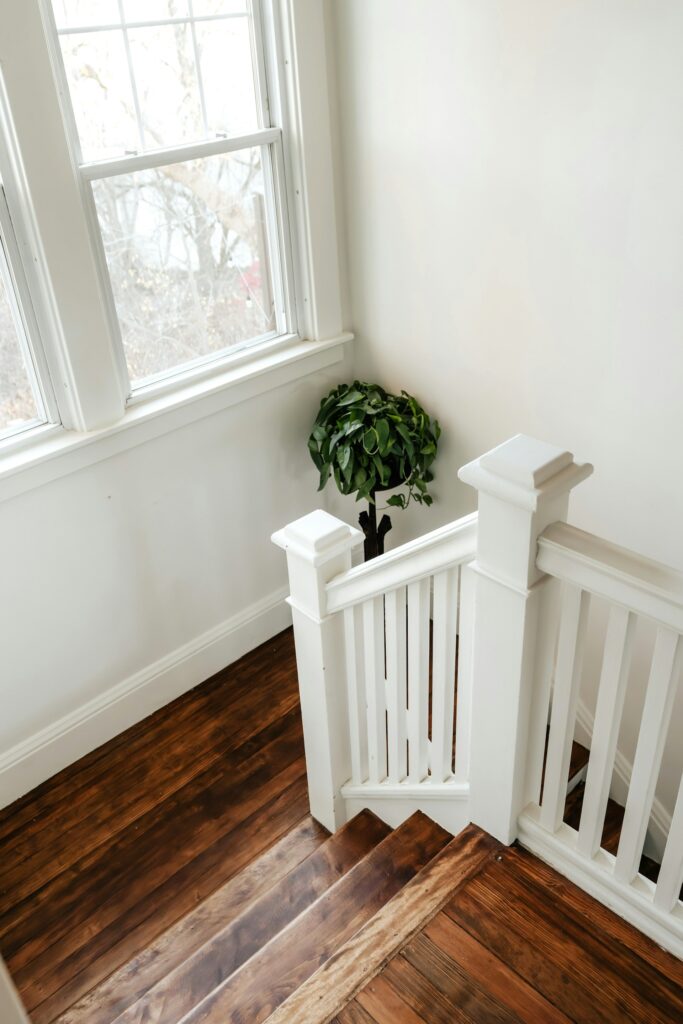

Choose sustainable timber for your staircase renovation; native species like oak and ash offer tremendous durability alongside beautiful grain patterns that improve with age. FSC-certified exotic woods can provide striking visual impact for handrails or feature treads without environmental guilt.
Plants deserve consideration in your staircase design too—particularly in urban homes starved of greenery. A carefully positioned monstera or kentia palm beneath a floating staircase creates breathing space, while trailing ivy or string-of-pearls cascading from a first-floor landing transforms an ordinary staircase into a living feature. The natural light so often present in hallways and stairwells creates ideal growing conditions for many houseplants, establishing a symbiotic relationship between architecture and nature.
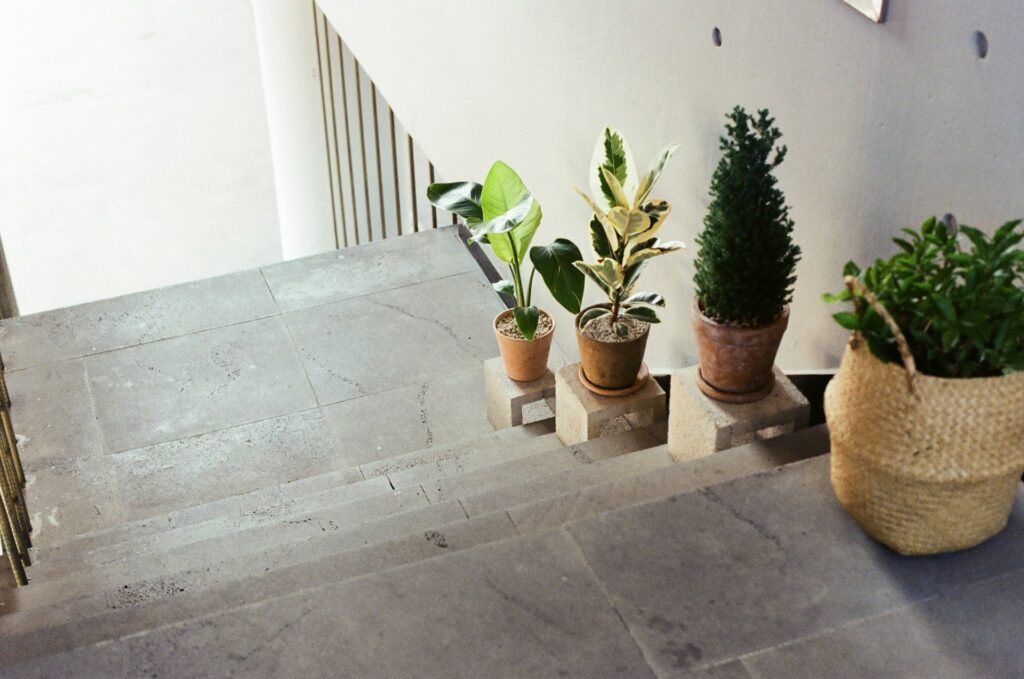
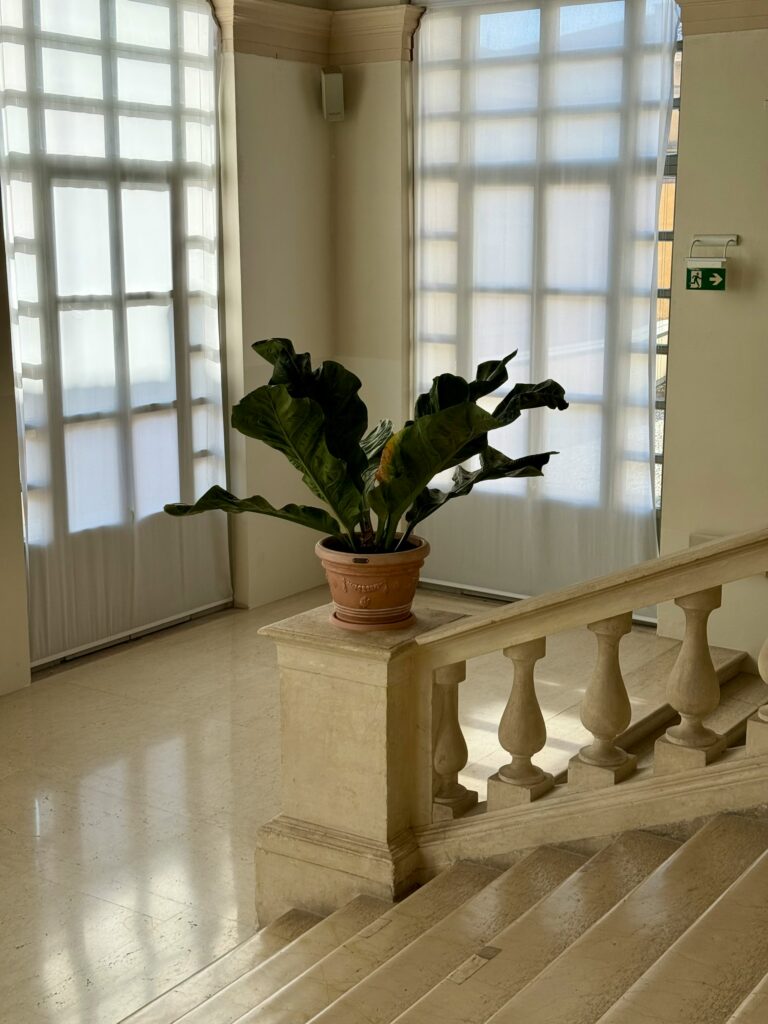
The Minimalist Power Of Concrete Stairs
Concrete has transcended its utilitarian origins to become one of the most sought-after materials in contemporary interior design. When applied to staircases, concrete offers an unparalleled combination of sculptural beauty and architectural strength that few other materials can match.
For those concerned about concrete’s cool industrial associations, fear not—the material pairs surprisingly well with softer elements. A concrete staircase flanked by white walls creates a perfect canvas for the play of natural light.
Indeed, the beauty of concrete lies in its chameleon-like versatility. In its most minimalist form, as seen in high-end architectural projects, a monolithic concrete staircase with smoothly curved treads creates a seamless flow between levels. The material’s natural pale palette complements bright, white walls perfectly, creating an almost gallery-like atmosphere that allows other design elements to shine. The soft, rounded edges of curved concrete stairs introduce an unexpected organic quality to what might otherwise be a stark, angular space.

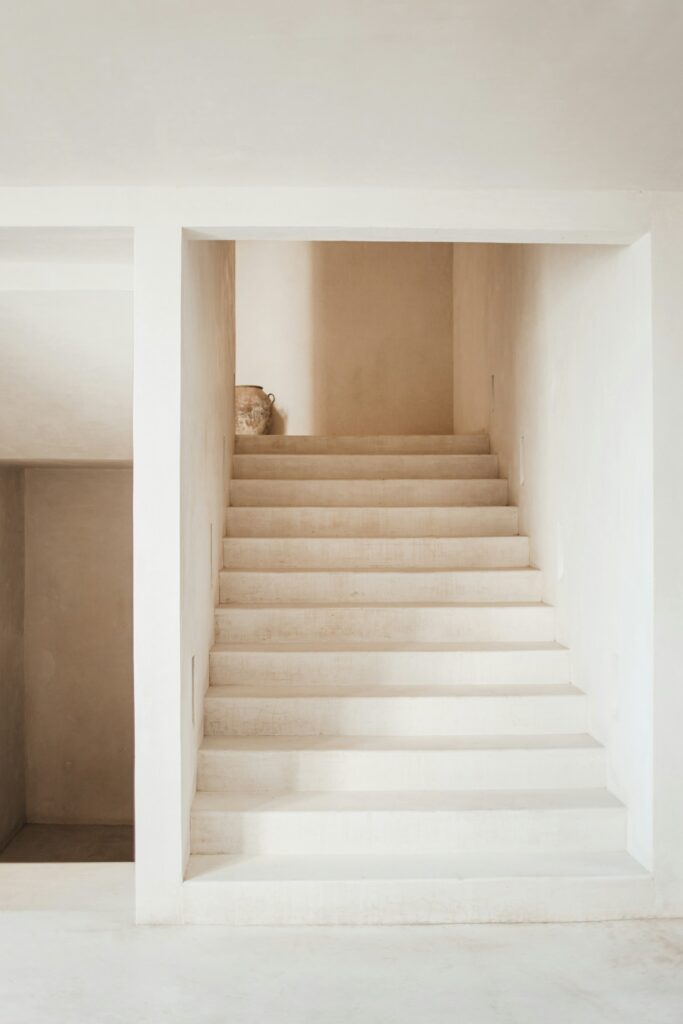
While polished concrete finishes create a sleek, contemporary look, more rustic treatment methods like hand-troweling produce subtly textured surfaces with greater character and depth. Concrete can also be tinted during mixing to achieve various tones from warm beige to sophisticated charcoal, allowing for seamless integration with your home’s colour palette.
The Bottom Line
Whether you opt for a dramatic overhaul or subtle cosmetic updates, your staircase holds tremendous potential to elevate your home’s interior. Far more than just steps between floors, a thoughtfully designed staircase becomes a design statement that sets the tone for your entire property. When properties come to market, a beautiful staircase often emerges as a major selling point for prospective buyers. It represents an investment that pays dividends both aesthetically and financially.
So next time you’re dashing up those stairs without a second glance, pause and consider the possibilities. That everyday structure you take for granted might just be your home’s next design triumph waiting to happen.

